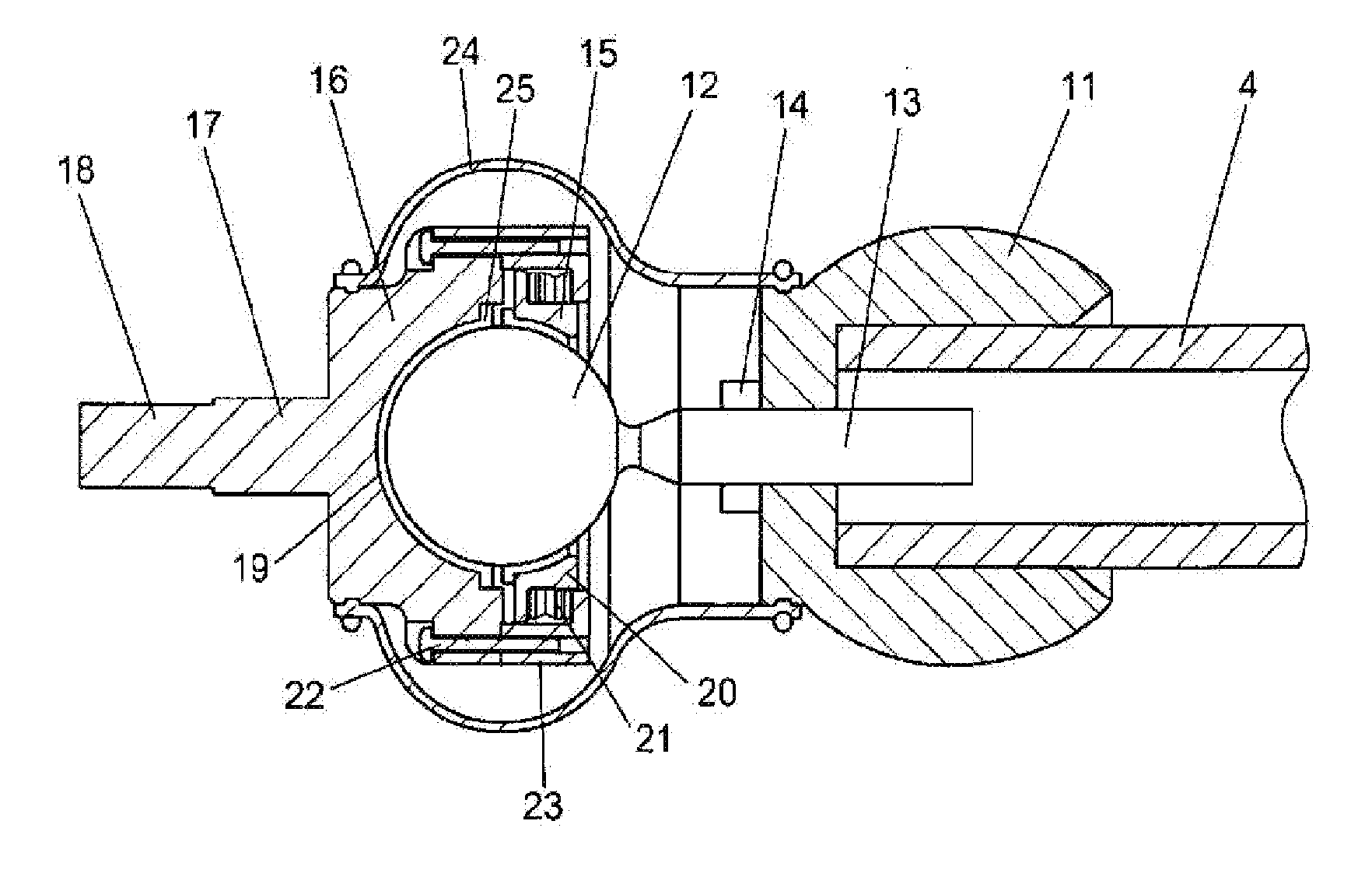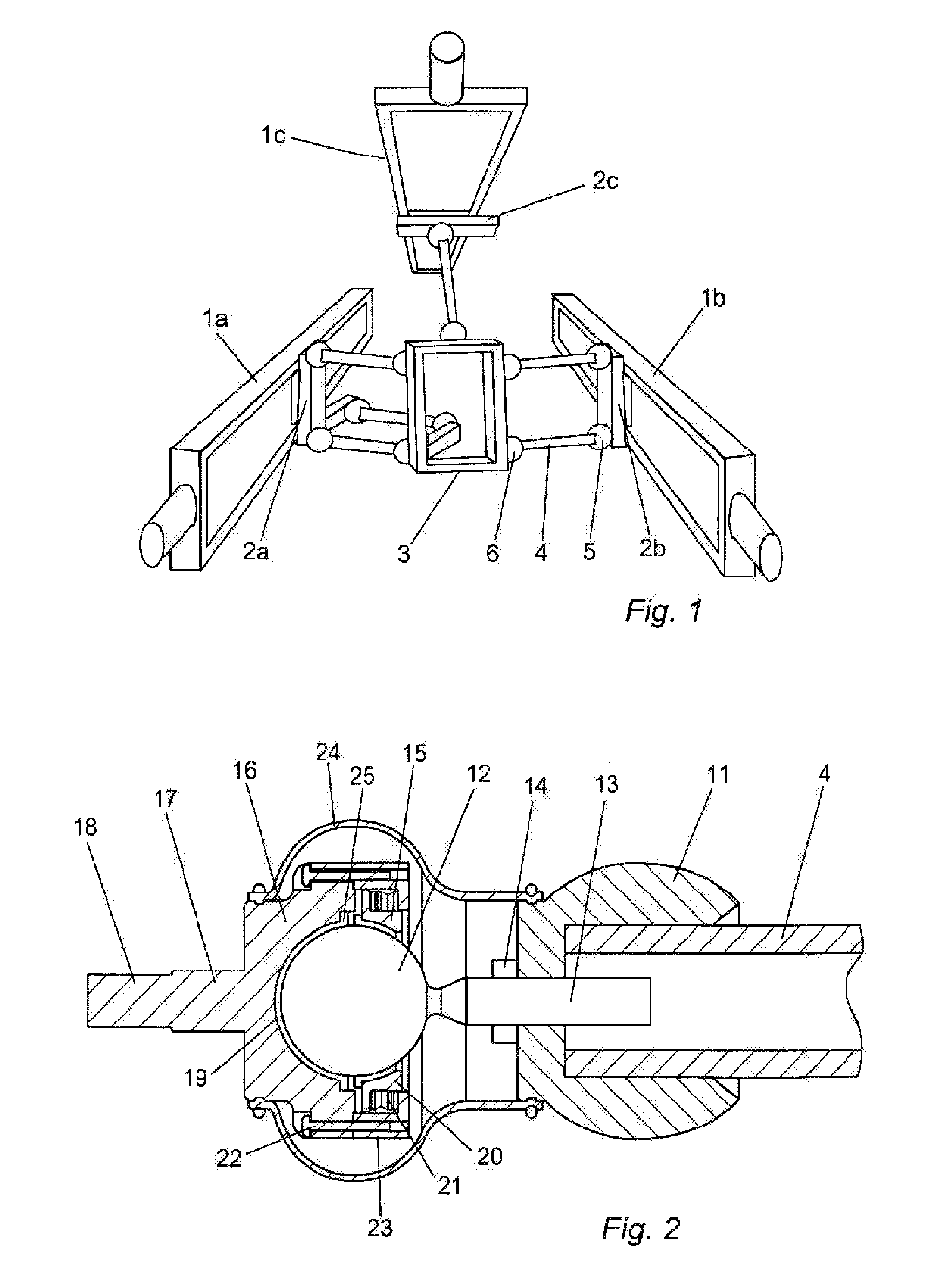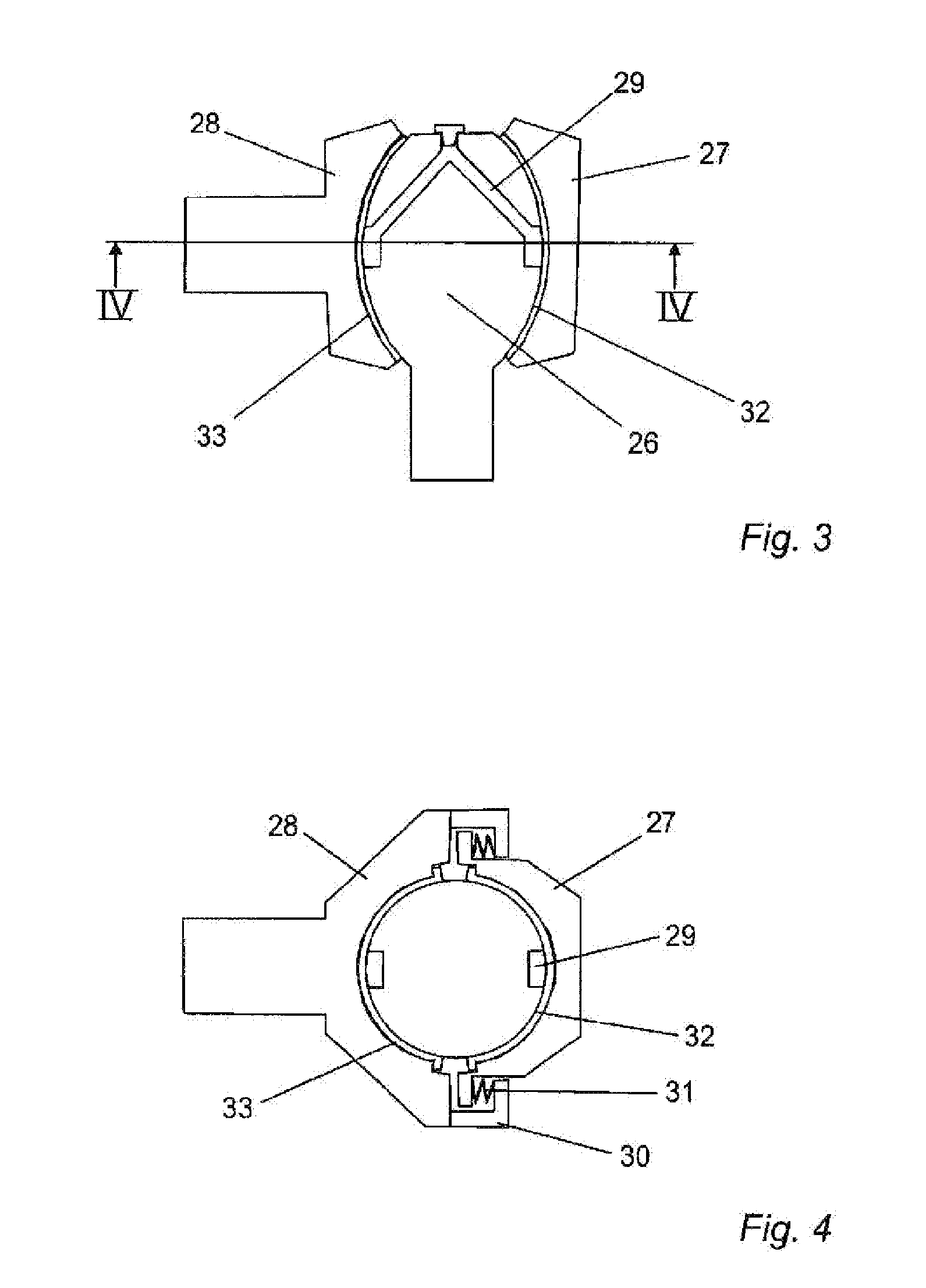Joint For Industrial Robots
a robot and joint technology, applied in the field of joints, can solve the problems of high weight relative stiffness and high need for joints with higher stiffness pro kg, and achieve the effects of large angular working range, high stiffness, and large interface surfaces
- Summary
- Abstract
- Description
- Claims
- Application Information
AI Technical Summary
Benefits of technology
Problems solved by technology
Method used
Image
Examples
Embodiment Construction
[0071]FIG. 1 schematically illustrates a parallel kinematic robot with six links, where the links transmit forces between actuators and a platform. Three linear actuators 1a, b and c move three carts 2a, b and c along three linear guide ways. The carts are connected to a platform 3 via links with joints in each end. Each link consists of a rod 4, of which one joint 5 connects it to the cart 2b and another joint 6 connects it to the platform 3. Both joints can have three degrees of freedom in this link configuration of the parallel kinematics robot. However it will work also with two degrees of freedom for each joint even if the link assembly then will be over constrained, which can lead to the introduction of residual torques in the links. Often a design with three degrees of freedom joints at the cart side is used and with two degrees of freedom joints at the platform side.
[0072]FIG. 2 shows a new link design with joints according to the invention. The link consists of a carbon tub...
PUM
 Login to View More
Login to View More Abstract
Description
Claims
Application Information
 Login to View More
Login to View More - R&D
- Intellectual Property
- Life Sciences
- Materials
- Tech Scout
- Unparalleled Data Quality
- Higher Quality Content
- 60% Fewer Hallucinations
Browse by: Latest US Patents, China's latest patents, Technical Efficacy Thesaurus, Application Domain, Technology Topic, Popular Technical Reports.
© 2025 PatSnap. All rights reserved.Legal|Privacy policy|Modern Slavery Act Transparency Statement|Sitemap|About US| Contact US: help@patsnap.com



